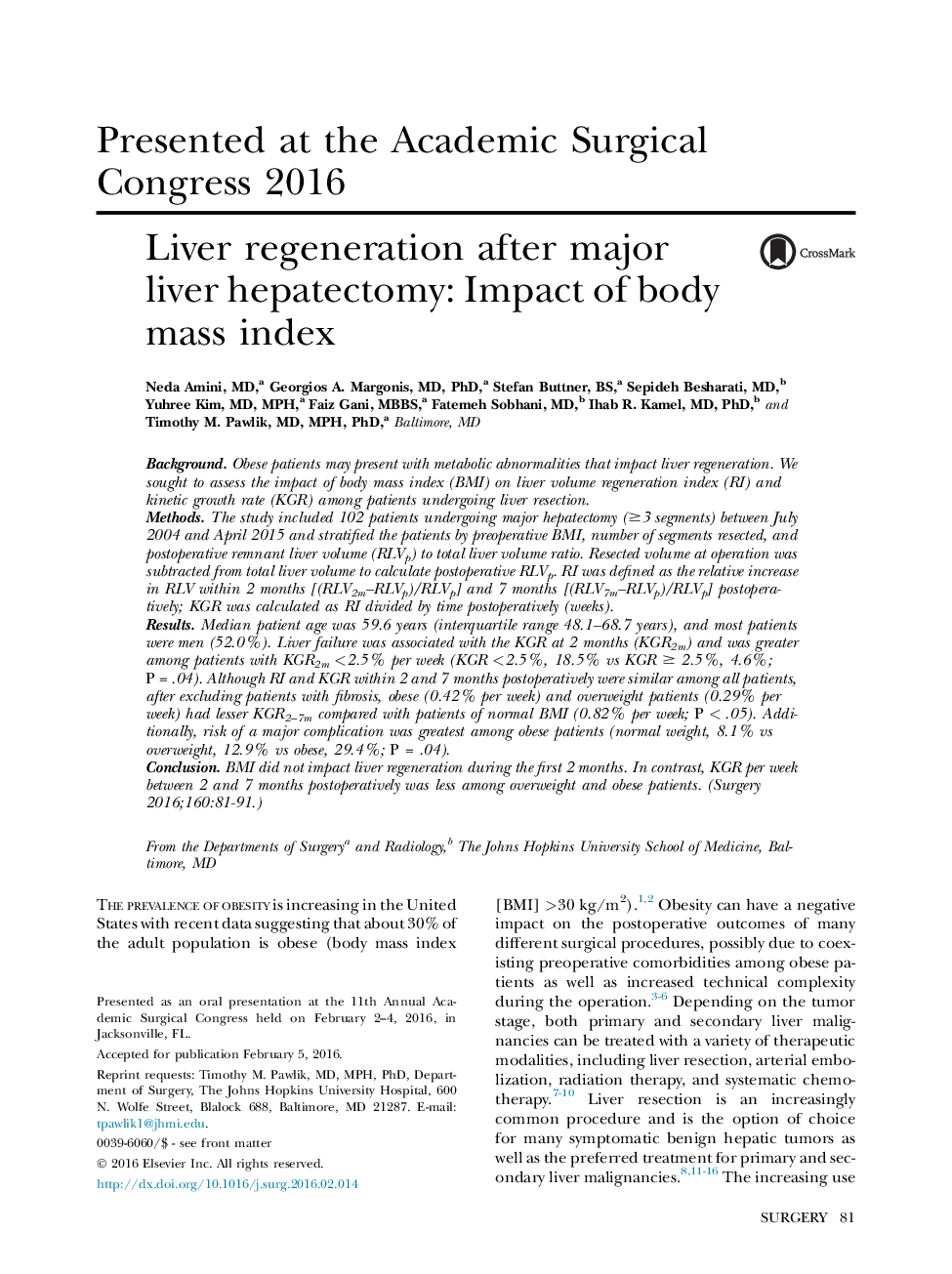| Article ID | Journal | Published Year | Pages | File Type |
|---|---|---|---|---|
| 6254767 | Surgery | 2016 | 11 Pages |
BackgroundObese patients may present with metabolic abnormalities that impact liver regeneration. We sought to assess the impact of body mass index (BMI) on liver volume regeneration index (RI) and kinetic growth rate (KGR) among patients undergoing liver resection.MethodsThe study included 102 patients undergoing major hepatectomy (â¥3 segments) between July 2004 and April 2015 and stratified the patients by preoperative BMI, number of segments resected, and postoperative remnant liver volume (RLVp) to total liver volume ratio. Resected volume at operation was subtracted from total liver volume to calculate postoperative RLVp. RI was defined as the relative increase in RLV within 2 months [(RLV2m-RLVp)/RLVp] and 7 months [(RLV7m-RLVp)/RLVp] postoperatively; KGR was calculated as RI divided by time postoperatively (weeks).ResultsMedian patient age was 59.6 years (interquartile range 48.1-68.7 years), and most patients were men (52.0%). Liver failure was associated with the KGR at 2 months (KGR2m) and was greater among patients with KGR2m <2.5% per week (KGR <2.5%, 18.5% vs KGR â¥Â 2.5%, 4.6%; P = .04). Although RI and KGR within 2 and 7 months postoperatively were similar among all patients, after excluding patients with fibrosis, obese (0.42% per week) and overweight patients (0.29% per week) had lesser KGR2-7m compared with patients of normal BMI (0.82% per week; P < .05). Additionally, risk of a major complication was greatest among obese patients (normal weight, 8.1% vs overweight, 12.9% vs obese, 29.4%; P = .04).ConclusionBMI did not impact liver regeneration during the first 2 months. In contrast, KGR per week between 2 and 7 months postoperatively was less among overweight and obese patients.
